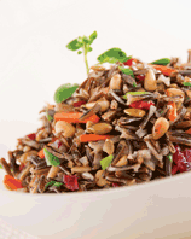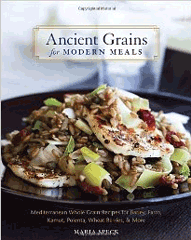Share This
Here at the Whole Grains Hotline, we field all kinds of questions every day. This week we heard from Ruth, in Minneapolis, who asked, “Why do whole grain products taste better now than ten years ago?” That was such a good question we decided to share our answer to Ruth with everyone.
Whole grains do indeed taste better than they did “back in the old days.” And consumers are taking notice. A 2009 survey of more than a thousand adults asked those who claimed they were making an effort to eat more whole grains to explain their reasons for making this effort. 36% of them said “I enjoy the taste.”
This was up considerably from a 2006 study where 13% cited taste as a purchase motivator. Other popular answers included “Whole grain foods are healthier” (76%); “In order to get more fiber” (69%); “To fill me up and help me lose weight” (53%); and “To get more vitamins and minerals” (44%).
It’s great to see that more than a third of those responding to this question see the nuttier, fuller taste of whole grains as a plus! This could explain why “about two third[s] of respondents reported that they prefer to buy breads and cereals made with whole grains.”
(Sources: A Survey of Consumers’ Whole Grain and Fiber Consumption Behaviors, and the Perception of Whole Grains as a Source of Dietary Fiber. Kellogg Co., March 2009 and Harris Interactive Survey of 1,040 adults, conducted January 2006, titled “Healthy Eating: Impact on the Consumer Packaged Goods Industry”)
So, back to Ruth’s question. WHY do whole grains taste better these days?
When companies first started making whole grain products, many of them wrongly believed that you could simply take the same old refined-grain recipe and just substitute whole grain flour for some or all of the refined grain, and come out the other end with a whole grain product. Not so! This approach results in a dense and unappetizing brick, nine times out of ten. You really need to start from scratch to create a delicious whole grain product.
Many manufacturers have told us that the low-carb craze a decade ago is responsible for better whole grains today. When Atkins Diet mania was in full force, many food companies were trying to jump on the bandwagon by making breads, crackers, and other traditional grain foods without ANY grains. The results weren’t very tasty — but by comparison, making foods with whole grains suddenly seemed simple, and do-able, these companies have told us. So — ironically, we have the low-carb craze to thank, in part, for improvements in taste.
Reformulation (the industry term for creating new recipes) is a very expensive and time-consuming process to do right. When manufacturers were uncertain of demand, they could not justify the investment to make really really good whole grain foods. In 2005 the Dietary Guidelines for the first time strongly recommended whole grains. Although we all know that people don’t immediately rush out to follow the Dietary Guidelines to the letter, this move by the government held enough promise of increased demand that some companies committed to more R&D on whole grain foods. Those improved foods led to a 20% increase in whole grain consumption from 2005 to 2008.
(Source: NPD Group)
As consumption increased, more companies committed resources to making better products, and new whole grain product introductions rose 87% in 2006, 41% in 2007, and 27% in 2008. All of this created a “Race for the Top” among companies, to the benefit of consumers who won’t settle for anything less than both health and taste in the same product. (Source: Mintel Global New Products Database)
Helping the process along has been increased awareness of, and availability of, alternative ingredients. Whole white wheat, with its lighter color and milder taste, helped create products that could appear to consumers unaccustomed to the stronger taste of whole (red) wheat. Use of neutral-tasting flours like brown rice flour and sorghum flour broadened the options for products, while ancient grains like quinoa, farro, amaranth, and teff started to be used as ingredients. Creative chefs served black rice, quinoa, freekeh, and other lesser-known grains, spurring adventurous home cooks to do more with whole grains. And a spate of good whole grain cookbooks supported enthusiasts’ experiments in the kitchen.
That’s a long way of saying there are a number of positive forces coming together here to increase the variety of delicious whole grain products available to consumers. There is truly something for every palate, in the whole grain universe today.
But many people aren’t aware of this. They may have tried a few whole grain foods back in what we refer to as the “bark and twigs” era of whole grain flavor, and sworn never to try a whole grain product again! They have no idea that they can find whole grain croissants, crackers, and cookies, in addition to the old standbys of breads and cereals. That’s why any and all efforts to make it easy for folks to try whole grain foods is important. (This fact spurred us to create our annual Whole Grain Sampling Day!)
We encourage everyone to try one new whole grain food every month. Maybe some of them won’t turn into favorites, but others will. At the end of the year, you’ll have several new go-to foods that you really enjoy, and your successes will encourage you to keep trying! What’s your favorite new whole grain food? Leave us a comment below, and tell us about your recent discoveries. (Cynthia)




Add a Comment